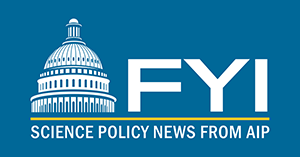Pandemic Taking Heavy Toll on Scientific Workforce
By Mitch Ambrose
A grim picture is emerging of the pandemic’s disruptions to the US scientific enterprise, with the costs of lost research, project delays, and other expenses already running into the tens of billions of dollars.
The Association of American Universities, which represents 63 leading US research institutions, has estimated the combined costs of the pandemic to its members for the year will range between $45 billion in total costs. Together with other research groups, they have proposed that Congress distribute at least 26 billion across science agencies to support research recovery activities and provide an additional $47 billion for broader financial relief.
Recent surveys have also shed light on how the pandemic has upended the lives of individual researchers, especially those with young children.
A survey of 329 members of the US high energy physics community found widespread work slowdowns, anxieties about potential layoffs and diminished career prospects, and mental health concerns. While a handful of people reported being more productive, the average estimated efficiency of work-from-home arrangements was 72%, and some respondents with childcare responsibilities reported efficiencies as low as about 5%.

One wrote, “Every scientist I know with small children is facing a complete breakdown of their ability to accomplish anything, all of our work is low-quality, and despite being exhausted beyond anything I have ever experienced in my life, I am slipping ever-further behind my peers.”
Respondents also raised concerns about how new visa restrictions could impair recruitment and how continuing travel restrictions could prevent US researchers from flying to Europe to visit CERN, which hosts the Large Hadron Collider.
Disruptions to work at the LHC itself are also coming into focus. The Department of Energy reports it will have to reset its baseline cost and schedule commitments to an ongoing accelerator upgrade due to pandemic-related delays. In a high-impact scenario, the department estimates the project will require an additional $30 million and 15 months to complete. A number of other construction projects underway across science agencies face similar challenges.
To scope out the broader consequences of the pandemic, the American Institute of Physics convened a nine-member task force this spring. Its report stresses that curtailed international exchange, reduced job opportunities for early career researchers, and knock-on effects of university budget contractions could severely diminish the physical sciences workforce.
The task force anticipates that the financial toll will be “particularly disastrous” for Historically Black Colleges and Universities (HBCUs), anticipating the pandemic will “slow the outsized contributions that HBCUs have made toward creating a more diverse physical sciences community.”
The task force nevertheless does identify some opportunities arising from the pandemic, observing that the expanded use of virtual teaching and conference tools could help engage previously unreached audiences. It also identifies an opportunity to draw more people into the physical sciences by demonstrating their relevance to crisis response.
“Just as the launch of Sputnik and the resulting large investment in K–12 science education it engendered led to an explosion in the number of students studying the physical sciences, the pandemic may cause a significant jump in students interested in studying biology and medicine,” the task force states. “A parallel increase in the number interested in the physical sciences could occur if there is high-quality instruction and if the case is made strongly that physical sciences advances are critical to addressing crises of all kinds, including those of a medical nature.”
The author is Acting Director of FYI.
Published by the American Institute of Physics since 1989, FYI is a trusted source of science policy news that is read by congressional staff, federal agency heads, and leading figures in the scientific community. Sign up for free FYI emails at aip.org/fyi.
©1995 - 2024, AMERICAN PHYSICAL SOCIETY
APS encourages the redistribution of the materials included in this newspaper provided that attribution to the source is noted and the materials are not truncated or changed.
Editor: David Voss
Staff Science Writer: Leah Poffenberger
Contributing Correspondents: Sophia Chen, Alaina G. Levine
Publication Designer and Production: Nancy Bennett-Karasik
September 2020 (Volume 29, Number 8)
Articles in this Issue

